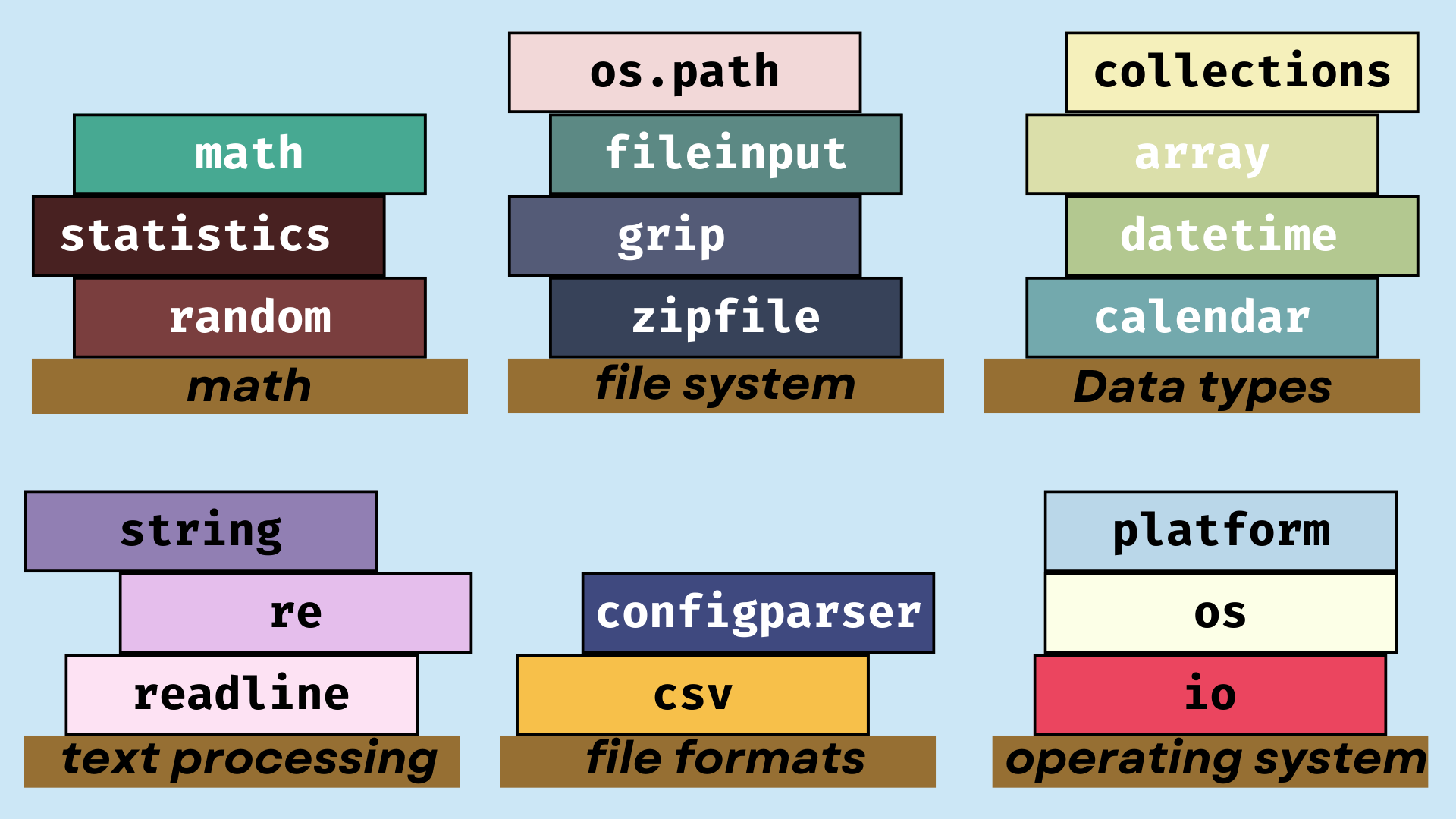Python Libraries

Introduction
In Python Programming, Library is like a collection of precompiled codes that can be used later in a program by the means of import. Library may contains documentation, classes, data, etc.
The term "Python library" refers to a group of related modules. It has collections of code that can be utilised repeatedly in many programmes. For the programmer, it simplifies and makes Python programming more feasible. Since we don't have to write the same code for many apps repeatedly. In the domains of machine learning, data science, data visualisation, etc., python libraries are quite important.
How Do Python Libraries work?
As was already mentioned, a Python library is only a group of codes, or modules of codes, that may be used in a program to do particular activities. We use libraries to avoid having to rewrite code that is already present in our programme.
The linker will automatically look for a library when we link it with our application and run it. It takes that library's functions and extracts them, then interprets the program accordingly. That is how our program uses a library's methods. We'll examine how we include libraries into our Python scripts in more detail.
Python Standard Library
The exact syntax, semantics, and tokens of Python are contained in the Python Standard Library. It has integrated modules that give users access to fundamental system features like I/O and a few more core modules. C is the programming language used to create the majority of the Python libraries. More than 200 core modules make up the Python standard library. Together, they enable Python to function as a high-level programming language. The role of the Python Standard Library is crucial. Without it, programmers are unable to use Python's functions. A programmer's life is made easier by a number of other libraries in Python.
Some of the Libraries used
Numpy
NumPy is a library that adds support for sizable, multi-dimensional arrays and matrices. It also provides a sizable number of high-level mathematical functions to work with these arrays.
Pandas
For the purpose of manipulating and analysing data, the Python programming language has a software package called pandas. It includes specific data structures and procedures for working with time series and mathematical tables. It is free software distributed under the BSD license's three clauses.
TensorFlow
TensorFlow is an open-source, free machine learning and artificial intelligence software library. The training and inference of deep neural networks are a particular area of focus for this tool, though it can be used for a variety of tasks.
Matplotlib
Matplotlib is a plotting library for Python programming language and its NumPy numerical mathematics extension,For embedding plots into programmes using all-purpose GUI toolkits like Tkinter, wxPython, Qt, or GTK, it offers an object-oriented API.
Scrapy
It is an open-source library that is employed for website data extraction. It offers high-level screen scraping and very quick web crawling. Additionally, it can be used for automated data testing and data mining.
Syntax
Below is the syntax used for importing a Library:
Using Python Libraries in a Python Program
We can make use of Python Libraries to make our code easier and less redundant. We can increase code reusability by using Libraries. So, lets take an example to see how we can use libraries for our programs.
Example 1
Importing and using a Library
Lets take a look at an example to see how we can import a library and use it.
Output:
Example 2
mporting a specific item from a library
Lets take a look at an example to see how we can import a specific function from a library and use it.
Output:
